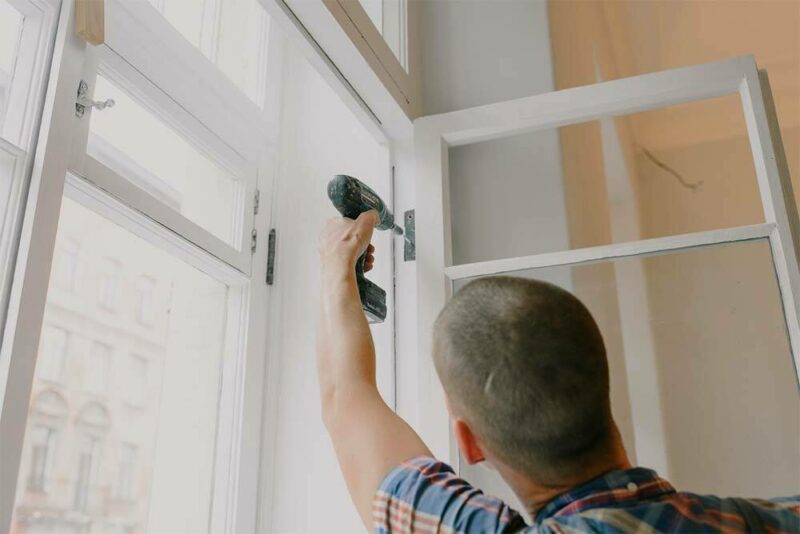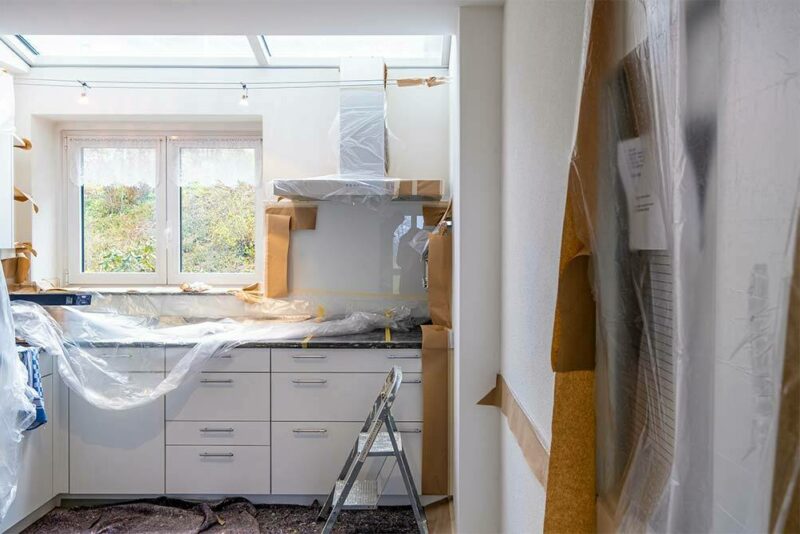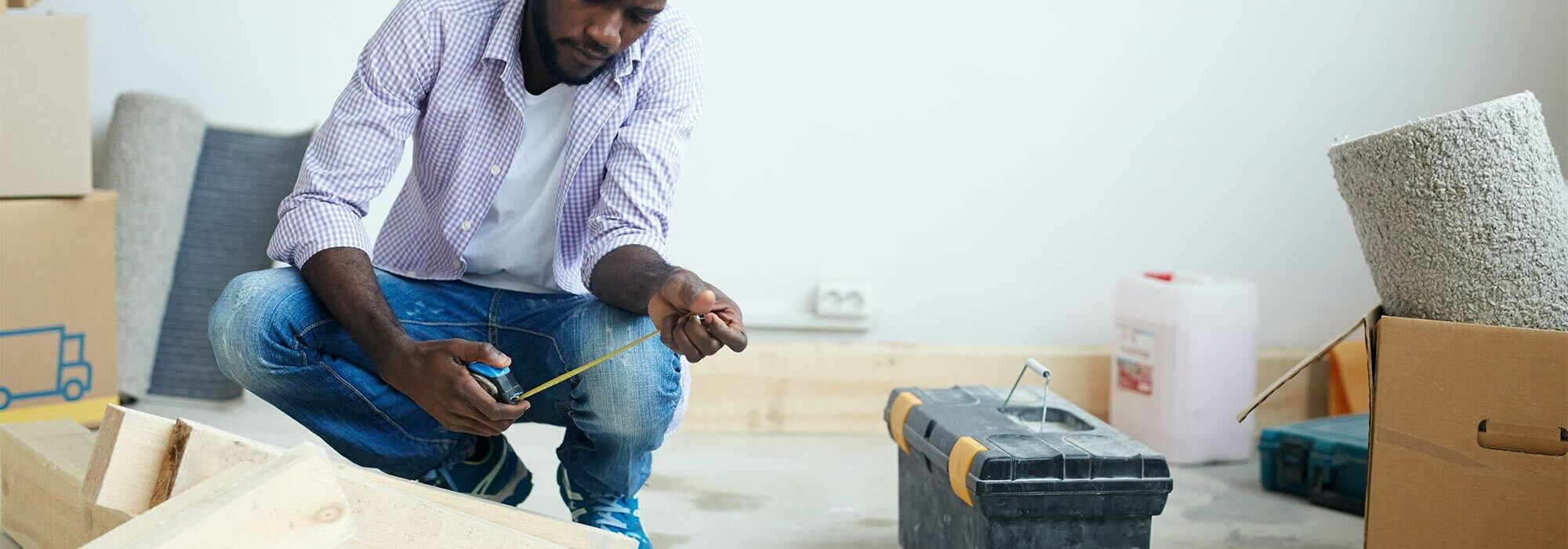Article Excerpt
See FHA 203(k) qualification requirements, a list of projects that FHA 203(k) loans can finance, and what happens if you don't follow the rules.
The Federal Housing Administration (FHA) offers a way for you to buy a home and borrow money for renovations and repairs. Known as the 203(k) program, it combines a purchase mortgage with a renovation loan. Read on to learn more about this program and its requirements.
What is an FHA 203(k) Renovation Loan?
FHA loans are insured by the federal government. This allows them to have less stringent qualification requirements. If you have some problems in your credit history that prevent you from qualifying for a conventional mortgage, for example, you might be able to qualify for an FHA loan.
At closing, part of the loan proceeds will go to the seller and the seller’s lender to pay off their mortgage. The rest of the money goes into an escrow account. The lender will release funds to the new homeowner as they complete repairs on the property.

Photo by Ksenia Chernaya on Pexels
How do I qualify for an FHA (203(k) Loan?
You must meet the following criteria to qualify for an FHA 203(k) loan:
Your credit score is at least 500
If your credit score is 580 or higher, you may be able to put down as little as 3.5%
You must use the property as your primary residence for at least twelve months
You must hire an approved contractor to do the renovations rather than do them yourself
Because of the flexible guidelines, you will have to purchase mortgage insurance.

Photo by immo RENOVATION on Unsplash
How much can I borrow with an FHA 203(k) Loan?
An FHA 203(k) loan operates in much the same way as a regular FHA loan. It may be available with a 15- or 30-year term, and with a fixed or adjustable rate. To determine the amount of the loan, the lender will look at the property’s current value and the estimated cost of the necessary renovation work to calculate the property’s value after the completion of the repairs. The final value will be the lesser of the following:
The sum of the property’s pre-renovation value and the cost of the renovations
110% of the property’s appraised value after the renovations are complete
FHA 203(k) loans are subject to the same loan limits as other FHA loans. The total loan amount, including both the purchase and renovations, cannot exceed your county’s conforming loan limits.
FHA loan limits are higher in the following Texas areas:
Dallas/Fort Worth metro area: $531,300 (includes 11 counties)
San Antonio-New Braunfels: $524,400 (includes 8 counties)
Austin-Round Rock-Georgetown: $571,550 (includes 5 counties)
The actual amount you will be able to borrow for repairs and renovations depends on the estimated cost and the type of loan you choose. The FHA has two types of 203(k) loans: Limited and Standard.
Limited FHA 203(k) Renovation Loans
A limited 203(k) loan, also known as a streamline 203(k) loan, would be ideal for a home that needs relatively minor repairs. This mostly involves changes to the home’s appearance and upgrades to its appliances or infrastructure. You cannot use a limited 203(k) loan to make significant structural changes to the home. The maximum amount you can borrow for repairs with a limited loan is $35,000, subject to the loan limit.
Standard FHA 203(k) Renovation Loans
A standard 203(k) loan has a minimum draw of $5,000 for repairs. The maximum amount is based on FHA loan limits. It works best for major repairs. You can even use a standard 203(k) loan to demolish the existing structure, except for the foundation, and build a new house.
The FHA requires you to use an approved consultant to manage the renovations for a standard loan. These are professionals with expertise in areas like architecture or engineering. The FHA maintains a searchable database of consultants.
What can I do with an FHA 203(k) Renovation Loan?
You can use an FHA 203(k) loan for a wide range of purposes related to improving your new home. These may include the following:
Demolishing and rebuilding the house, except for the foundation
Renovating deteriorating parts of the house, such as structural damage or damage from termites
Removing health hazards like lead-based paint or mold
Improving the home’s appearance, such as adding new paint or siding
Remodeling existing rooms, such as adding new appliances to a kitchen or new fixtures in bathrooms
Adding a second story
Replacing flooring or carpeting
Replacing the roof and roof features like gutters
Adding or expanding a garage
Adding new rooms, such as extra bedrooms or a family room
Adding a porch or deck attached to the house
Repairing a swimming pool
Providing accessibility for individuals with disabilities
Improving a home’s energy efficiency
Major landscaping improvements
Repairing or replacing infrastructure, such as plumbing or electrical wiring
You may not use a 203(k) loan to add new “luxury” features to the home. The FHA defines this as anything that does not improve the functionality or attractiveness of the home itself. This might include a new swimming pool or hot tub, as well as other features that are not directly connected to the house. You can use a 203(k) to repair a swimming pool that is already there, but not to build a new one.
What happens if I use the money from an FHA 203(k) Renovation Loan for something I’m not supposed to?
The FHA and FHA-approved lenders tend to be fairly “hands-on” with 203(k) loans. You must hire an FHA-approved consultant to manage renovations with a standard 203(k) loan. The consultant will inspect the property, determine what repairs and renovations are needed, and provide a report to the lender with an estimate of the cost. All of this occurs during the loan application phase.
Once the renovation work begins, an approved contractor is supposed to do the work, and the lender is only supposed to disburse money from the escrow account as needed to pay for labor and materials. The result of this is that it would be difficult for a homeowner to use a standard 203(k) loan for an improper purpose without someone noticing.
A limited 203(k) loan does not require an FHA-approved consultant. The homebuyer can create their own estimate of the cost of repairs, but they still have to hire an approved contractor to do the work.
Are there penalties for using the money incorrectly?
It would be difficult to misuse funds with a standard 203(k) loan since an approved consultant is reporting to the lender about the project. The lender will only disburse funds to pay for approved work.
If you’re caught misusing funds, the best-case scenario is that the lender refuses to disburse money to pay for that work, and it has to come out of your pocket. If you lie to your lender to get the money, such as by misrepresenting the kind of work you are having done at the house, that could constitute mortgage fraud. This is a serious offense under both state and federal law. The penalties could include fines and jail time.
Apply for an FHA 203(k) Loan with the lender Texans trust!
FHA loans make home ownership possible for people across the country. If you’re wanting the best bang for your buck with flexible qualification guidelines, an FHA 203(k) loan may be a good option. The Wood Group of Fairway is here to make the mortgage process easier. Answer a few easy questions and we’ll reach out to see what you qualify for!




